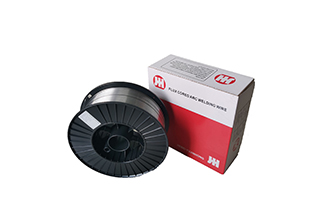High-Quality Stainless Steel Solid Welding Wire for Reliable Applications
Understanding Stainless Steel Welding Wire A Comprehensive Overview
Welding is an essential process in various industries, providing the means to join metal pieces together for construction, manufacturing, and repairs. Among the various types of welding wires available, stainless steel welding wire shines as a preferred choice due to its durability, resistance to corrosion, and high strength. This article examines the significance, types, applications, and advantages of stainless steel welding wire, particularly focusing on solid variants.
What is Stainless Steel Welding Wire?
Stainless steel welding wire is specifically designed for welding stainless steel components. Made from a steel alloy that contains a minimum of 10.5% chromium, this wire prevents oxidation and degradation over time, making it ideal for applications exposed to harsh environmental conditions. The solid variants of stainless steel welding wire differ from their flux-cored counterparts in that they do not contain any core material; they are simply a solid length of stainless steel that is melted to create a joint.
Types of Stainless Steel Welding Wire
1. ER308L This wire is commonly used for welding austenitic stainless steels and is known for its excellent corrosion resistance. It is suitable for service temperatures up to 800°F (427°C), making it ideal for food processing and chemical industries.
2. ER316L This variant contains molybdenum, which enhances its resistance to pitting and crevice corrosion. It's often used in marine applications and is suitable for welding types 316 and 316L stainless steels.
3. ER309L This wire is specifically formulated for welding dissimilar metals, such as stainless steel to carbon steel. It provides good strength and corrosion resistance in diverse environments.
4. ER410 Suitable for welding martensitic stainless steels, this wire is used primarily in applications that require wear resistance. It is commonly found in the manufacturing of machinery components and in power generation sectors.
Applications of Stainless Steel Welding Wire
stainless steel welding wire solid

Stainless steel welding wire is utilized across a multitude of industries. The automotive sector relies on it for constructing exhaust systems due to its high-temperature stability and corrosion resistance. In the food and beverage industry, its non-reactive properties make it ideal for creating sanitary equipment, ensuring product purity. Additionally, the oil and gas industries depend on stainless steel welding wire for pipelines and storage tanks, where durability and resistance to harsh chemicals are paramount.
Advantages of Using Solid Stainless Steel Welding Wire
1. Corrosion Resistance Stainless steel welding wire offers superior resistance to oxidation and corrosion compared to other materials. This characteristic is particularly advantageous in environments that include moisture, chemicals, or extreme temperatures.
2. Strength and Durability Solid stainless steel welding wire provides robust joints with high tensile strength, making it an excellent choice for structural applications where safety and reliability are critical.
3. Versatility This type of welding wire can be used on various grades of stainless steel, allowing for flexibility in applications. It can also be used in a variety of welding processes, including MIG (Metal Inert Gas) and TIG (Tungsten Inert Gas) welding.
4. Ease of Use Solid stainless steel welding wire is often easier to handle and feed through welding equipment compared to cored wires. Its consistency in diameter and composition leads to smoother arcs and cleaner welds.
5. Aesthetic Finish Welds made with stainless steel welding wire often result in a smoother finish, which is particularly important in aesthetic applications or where weld visibility is a concern.
Conclusion
Stainless steel welding wire, especially in its solid form, is pivotal in modern fabrication and manufacturing sectors. Its exceptional properties, versatility, and advantages make it an indispensable material for many industries. Understanding the different types and their applications allows businesses and welders to select the appropriate wire for their specific needs, enhancing productivity and ensuring the integrity of their welded structures. Whether it's automotive, food processing, or construction, solid stainless steel welding wire continues to be a backbone material in achieving high-quality welding results.
-
Best MIG Welding No Gas Flux Core Solution – Easy, Portable & Clean WeldingNewsJul.08,2025
-
7018 Welding Rod 3/16 - High Strength, Low Hydrogen Electrodes Wholesale 3/32 Welding Rod 7018 Suppliers & China 7018 AC Welding Rod FactoryNewsJul.08,2025
-
High Quality MIG Aluminium Welding Wire - Wholesale Factory Prices from China SuppliersNewsJul.07,2025
-
High-Quality Gasless Aluminum Welding Wire China Gasless Aluminum MIG Wire SupplierNewsJul.07,2025
-
High Quality Ordinary Welding Rod for Pipes – Reliable China Welding Rod 7016 SupplierNewsJul.06,2025
-
Welding Wire 0.9 mm ER70S-6 Supplier Wholesale Manufacturers & FactoriesNewsJul.06,2025


